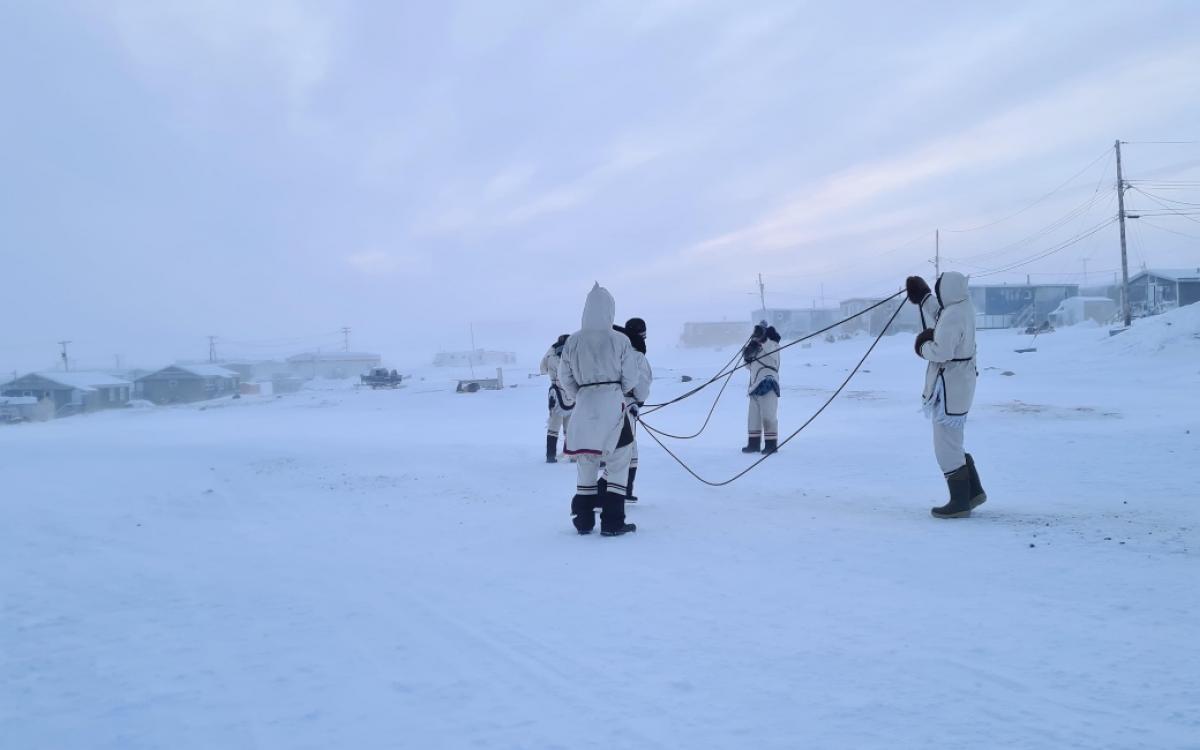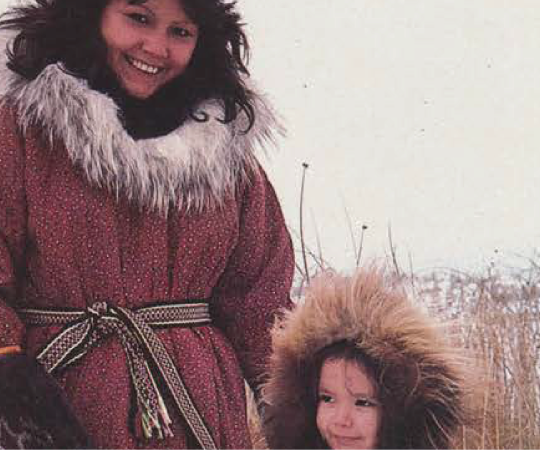The day before Nunavut’s 14-day COVID lockdown began, a group of 10 circus performers bundled up in matching white parkas, their hoods pulled up and tightened around their faces, and headed outside.
In mid-November the Government of Nunavut announced the stark news of COVID-19’s arrival in Nunavut communities. Reported cases rose sharply nearly every day. The mood was grim. It didn’t help that this all began as the sun set in Iglulik for the last time until the new year. But that’s exactly why Artcirq headed into the streets.
“Now that everything is closed in Nunavut, we can see even more that we can achieve great [things] when we trust each other,” says Artcirq co-founder Guillaume Saladin over email.
Artcirq’s performance was part of the Grand Acts of Theatre initiative, in which Ottawa’s National Arts Centre worked with 12 national theatre companies. The groups performed in their towns’ streets to offer a glimmer of hope during a global pandemic.
In Iglulik, the mix of professional and teenaged artists with Artcirq performed The Great Darkness in multiple spots around town over the course of the day. The performers played a round of a traditional string game, where various shapes are made using a thin piece of string. But in this case, 10 performers gathered to make larger shapes from some rope, including the shape of a tent.
“There are many string game tales that have kind of a long story, but we did simple acts that we were able to do as a group because some of the string games are so intricate,” says Artcirq artistic director Jacky Qrunnut. He explains the string game goes back a long way, and recalls playing it as a child.
“It was a hopeful thing that the sun would come back,” Qrunnut says. He adds that you can only play the game while the sun is out, so as “not to tangle the sun on the side of darkness.”
At the end of The Great Darkness performance, an 11th artist cut the rope—as is done during the traditional string game to signify the sun’s hiatus. Meanwhile, onlookers watched from inside their homes while a local radio station played music to coincide with the performance.
Artcirq could not have expected the rise of COVID cases in Nunavut when the group started practising, six weeks prior. But it isn’t unusual for the well-known circus collective to act as a light at the end of the tunnel for its community. In fact, that’s how Artcirq began in the first place.
In 1998, Iglulik was dealing with the death of two teenagers by suicide, once again shattering the small community of about 1,600 people. In response to those deaths, a group of young people in the community, including Saladin (who is a former student of Montreal’s National Circus School) created the Inuit performing arts collective. The organization invites teenagers to combine traditional Inuit culture with modern artistic practices and has been joined by dozens of other performers over the years. So, what began as a small community effort turned into a renowned Arctic circus troupe that’s entertained people all over the world.
But the performance this past November will likely be one of the most memorable.
“We felt we achieved our goals when we performed in multiple locations around town, just before the lockdown. Like a call to say that we are entering in another time, where light will be less, where hunting will be harder, where the sun might not come back,” says Saladin. “Now, let’s hope every house in Nunavut will have enough resources to go through this great darkness. Our little contribution is to keep the flame alive.”










